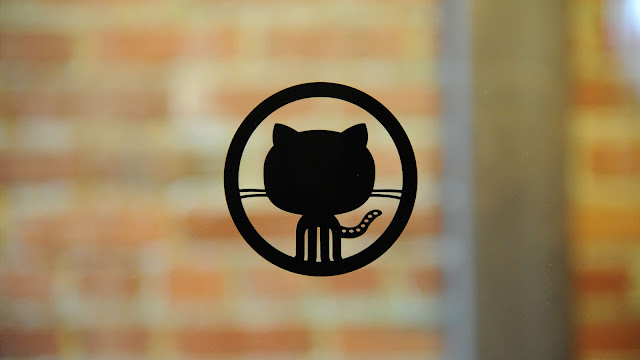Collaboration is at the heart of successful open-source projects, and GitHub has become the go-to platform for developers looking to work together seamlessly. In this guide, we will explore the key aspects of collaborating on GitHub for a project, covering everything from creating a repository to resolving conflicts.
Getting Started: Setting Up Your Repository
The foundation of collaboration on GitHub is the repository. Start by creating a new repository on your GitHub account. Choose a meaningful name, add a description, and decide whether it will be public or private.
Cloning the Repository: Bringing the Project to Your Local Machine
Once the repository is set up, clone it to your local machine using Git. This allows you to work on the project locally and push changes back to the remote repository.
git clone https://github.com/your-username/your-repository.gitBranching Strategy: Keeping Work Organized
Embrace a branching strategy to keep your work organized. Create branches for new features, bug fixes, or any significant changes. This ensures that changes can be reviewed before merging into the main branch.
git checkout -b feature-branchMaking Changes: Coding Collaboratively
Work on your assigned tasks within your branch. Regularly commit your changes with descriptive messages. This helps collaborators understand the purpose of each commit.
bashgit add . git commit -m "Implemented feature X"Pushing Changes: Sharing Your Work
Push your local branch to the GitHub repository to make your changes visible to collaborators. This step is essential for others to review and potentially integrate your work into the main project.
git push origin feature-branchPull Requests: Initiating Collaboration
When you're ready to merge your changes, open a pull request. This serves as a discussion space where collaborators can review your code, leave comments, and suggest improvements.
Code Review: Collaboratively Improving Quality
Collaborators review your code within the pull request. Address feedback, make necessary changes, and push them to the same branch. This iterative process ensures high-quality contributions.
Merging Changes: Bringing Features Together
Once your changes are approved, they can be merged into the main branch. This integration should be done with care to avoid conflicts and maintain project stability.
Handling Conflicts: Resolving Differences
Conflicts may arise when merging branches. GitHub provides tools to resolve conflicts directly on the platform. Collaborators can discuss and decide on the best resolution.
Collaborator Permissions: Managing Access
GitHub allows repository owners to manage collaborator permissions. Be mindful of who has write access to the repository, and grant permissions according to the contributors' responsibilities.
Communication: Key to Successful Collaboration
Effective communication is crucial throughout the collaboration process. Use GitHub's issue tracker to discuss bugs, propose new features, and outline project milestones. Clear communication helps align team members and ensures everyone is on the same page regarding project goals and timelines.
Automated Testing: Ensuring Code Quality
Implement automated testing to maintain code quality. GitHub Actions, for example, allows you to set up workflows that run tests automatically when changes are pushed. This ensures that proposed changes do not introduce new issues to the project.
name: CI on: push: branches: - main jobs: test: runs-on: ubuntu-latest steps: - name: Checkout repository uses: actions/checkout@v2 - name: Set up Node.js uses: actions/setup-node@v3 with: node-version: 14 - name: Install dependencies run: npm install - name: Run tests run: npm testDocumentation: Maintaining Clarity
Keep project documentation up to date. Documenting code, processes, and decision-making helps collaborators understand the project's structure and purpose. Clear documentation is especially valuable for new contributors joining the project.
Version Control Best Practices: Ensuring Stability
Adhere to version control best practices. Use meaningful commit messages, avoid force pushes to shared branches, and follow semantic versioning for releases. These practices contribute to a stable version history and facilitate collaboration.
Community Guidelines: Fostering a Positive Environment
If your project gains a community of contributors, establish community guidelines. These guidelines should outline the expected behavior, code of conduct, and contribution process. A positive and inclusive community fosters a healthy collaborative environment.
Security Considerations: Prioritizing Safety
Prioritize security by regularly scanning dependencies for vulnerabilities. GitHub provides tools like Dependabot that automatically create pull requests to update dependencies with security fixes. Staying vigilant about security helps protect the project and its users.
Continuous Integration/Continuous Deployment (CI/CD): Streamlining Processes
Implement CI/CD pipelines to automate testing and deployment processes. This ensures that changes are thoroughly tested before being deployed to production. GitHub Actions, Jenkins, and Travis CI are popular tools for setting up CI/CD workflows.
name: CD on: push: branches: - main jobs: deploy: runs-on: ubuntu-latest steps: - name: Checkout repository uses: actions/checkout@v2 - name: Deploy to production run: ./deploy.sh
Conclusion:
Collaborating on GitHub is not just about writing code; it's about fostering a culture of collaboration, communication, and continuous improvement. By following these additional steps, you can contribute to a project in a meaningful way, ensuring its success, sustainability, and positive impact on the developer community. Open-source collaboration is a dynamic and evolving process, and by embracing these practices, you contribute to the growth and success of the projects you're involved in.


No comments:
Post a Comment